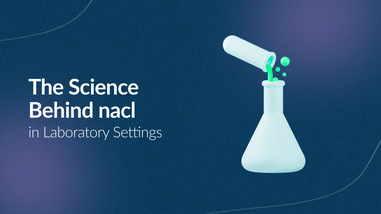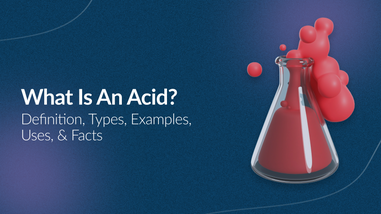- No products in the cart.
Hydrochloric acid (HCl) is a versatile and crucial chemical compound used in various industries, from metallurgy to food processing. Understanding its industrial production process provides valuable insights into the chemical manufacturing sector's complexity and innovations. In this comprehensive exploration, we'll dive deep into the industrial production process of hydrochloric acid, examining the methods, raw materials, and technological advancements that drive efficient production.
The Importance of Hydrochloric Acid
Hydrochloric acid, often known simply as muriatic acid, is a strong, highly corrosive mineral acid with a wide range of industrial applications. It is used for:
-
Metal Processing: HCl is employed in pickling and passivation processes to remove rust and scale from steel and other metals.
-
Chemical Manufacturing: It serves as a reactant in the production of various chemicals, including pharmaceuticals, fertilizers, and dyes.
-
Food and Beverage Industry: HCl is used for pH control, water treatment, and food processing applications.
-
Water Treatment: It helps adjust the pH of water and remove impurities.
-
Oil Well Acidizing: In the oil and gas industry, it's used to enhance well productivity.
Methods of Hydrochloric Acid Production
The production of hydrochloric acid on an industrial scale primarily involves two methods: the synthesis of hydrogen chloride gas (HCl) followed by its dissolution in water, and the direct synthesis of HCl in a water solution. Let's explore both methods:
1. Synthesis of Hydrogen Chloride Gas
Step 1: Chlorine Production
- The process typically begins with the production of chlorine gas (Cl2), commonly through the electrolysis of brine (sodium chloride or saltwater).
Step 2: Hydrogen Chloride Synthesis
- Chlorine gas is then combined with hydrogen gas (H2) through a controlled reaction to form hydrogen chloride gas.
Step 3: Dissolution in Water
- The generated hydrogen chloride gas is dissolved in water to create hydrochloric acid.
2. Direct Synthesis of Hydrochloric Acid
This method involves the direct synthesis of hydrochloric acid in a water solution. Here's how it works:
Step 1: Combustion of Hydrogen and Chlorine
- Hydrogen gas and chlorine gas are combusted together in the presence of a catalyst to form hydrogen chloride gas.
Step 2: Absorption in Water
- The resulting hydrogen chloride gas is absorbed directly into water to form hydrochloric acid.
Raw Materials
The primary raw materials for hydrochloric acid production are chlorine gas (Cl2) and hydrogen gas (H2). These are typically obtained from readily available sources:
-
Chlorine Gas: Produced from the electrolysis of brine, which is a solution of sodium chloride (NaCl) in water. The process yields chlorine gas and sodium hydroxide (NaOH) as valuable co-products.
-
Hydrogen Gas: Typically obtained through the steam reforming of natural gas or by electrolysis of water.
Technological Advancements in Hydrochloric Acid Production
The production of hydrochloric acid has evolved over the years, with advancements driven by safety, efficiency, and environmental concerns. Some notable innovations include:
1. Membrane Cell Electrolysis
This technology has largely replaced the older mercury cell electrolysis for chlorine production. Membrane cells are more environmentally friendly, as they eliminate the use of mercury and reduce the formation of chlorine gas emissions.
2. Hydrogen Chloride Recovery
Efforts have been made to recover and recycle hydrogen chloride gas during various chemical processes, reducing waste and improving overall resource efficiency.
3. Environmental Compliance
Stringent environmental regulations have spurred the development of cleaner and more efficient production processes, minimizing emissions and waste disposal challenges.
4. Automation and Process Control
Advanced automation and process control systems have enhanced the precision and safety of hydrochloric acid production, reducing the risk of accidents and improving product quality.
Environmental Considerations
While hydrochloric acid plays a vital role in numerous industries, its production can have environmental implications. Efforts to minimize these impacts include:
-
Emission Controls: Scrubbers and gas cleaning systems are used to capture and neutralize chlorine gas emissions.
-
Resource Efficiency: Recycling and recovery of raw materials, like hydrogen chloride gas, reduce waste and resource consumption.
-
Sustainable Sourcing: The responsible sourcing of raw materials, such as sustainable salt mining, helps mitigate environmental impacts.
Safety Measures and Precautions
-
Personal Protective Equipment (PPE): Workers must wear appropriate PPE, including chemical-resistant gloves, safety goggles, face shields, and protective clothing, to safeguard against chemical exposure.
-
Engineering Controls: Implement safety measures such as adequate ventilation systems, gas monitoring, and chemical storage solutions to minimize the risks associated with toxic gases and chemical reactions.
-
Training and Education: Proper training and education programs are essential for employees to understand the hazards, safe handling procedures, and emergency response protocols.
-
Emergency Response: Establish robust emergency response plans that include eyewash stations, safety showers, and spill containment measures to address accidents promptly.
-
Environmental Compliance: Adherence to environmental regulations is crucial to prevent pollution and minimize the environmental impact of HCl production.
-
Automation and Process Monitoring: Utilize advanced process control and automation systems to reduce manual handling of hazardous materials and ensure precise control over the production process.
-
Safety Audits and Inspections: Regular safety audits and inspections help identify potential hazards and ensure compliance with safety protocols.
-
Storage and Handling: Properly store and handle chemicals, including hydrogen and chlorine, in well-designed facilities with safety features to prevent leaks and accidents.
Conclusion
The industrial production process of hydrochloric acid is a fascinating journey from raw materials to a versatile chemical with diverse applications. Advances in technology, safety measures, and environmental consciousness continue to shape and improve this production process. As industries worldwide rely on hydrochloric acid for various applications, the pursuit of sustainable, efficient, and eco-friendly manufacturing methods remains paramount, ensuring a cleaner and more responsible future for chemical production.
For over 40 years, Lab Pro Inc. has been committed to delivering highest quality lab chemicals, lab supplies, hand tools, lab equipment, reagents, distance learning kits, and cleanroom PPE apparel. Renowned by global medical device companies and laboratories, we ensure exceptional quality in every product. Contact us online or call 888-452-2776 to learn more. Discover top-notch lab supplies and elevate your experiments today!












































